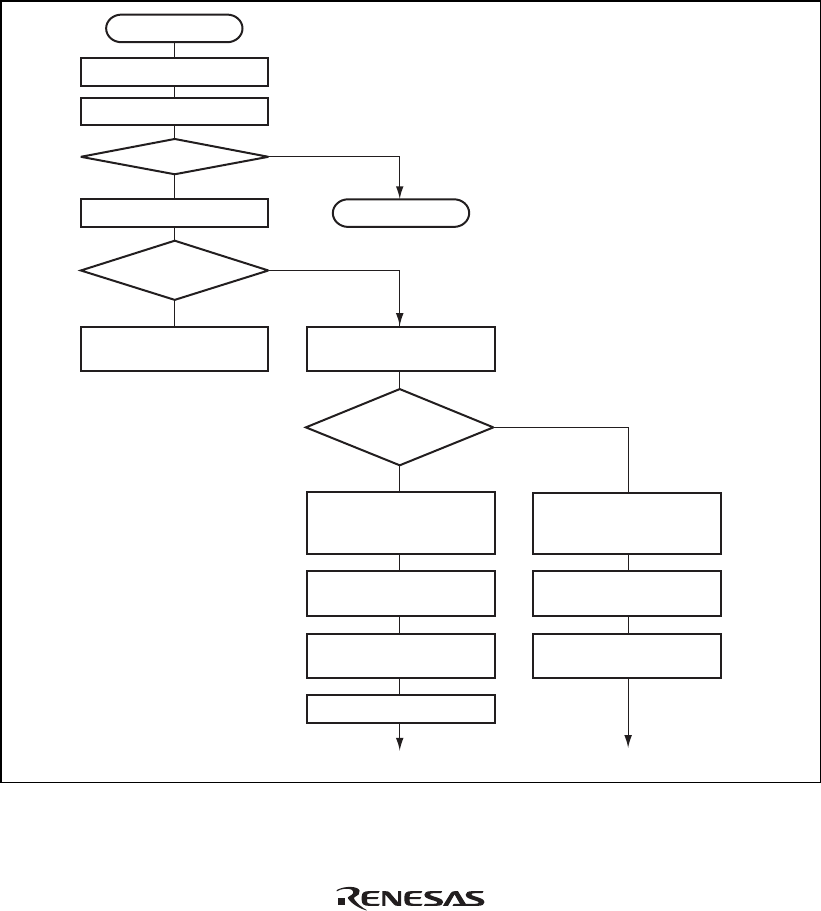
Rev. 1.00, 05/04, page 359 of 544
14.4.3 Receive Abort
This LSI (system side) can forcibly abort transmission from the device connected to it (keyboard
side) in the event of a protocol error, etc. In this case, the system holds the clock low. During
reception, the keyboard also outputs a clock for synchronization, and the clock is monitored when
the keyboard output clock is high. If the clock is low at this time, the keyboard judges that there is
an abort request from the system, and data transmission from the keyboard is aborted. Thus the
system can abort reception by holding the clock low for a certain period. A sample receive abort
processing flowchart is shown in figure 14.7, and the receive abort timing in figure 14.8.
Read KBCRL
KBF = 0?
RXCR3 to RXCR0 ≥
B'1001?
Disable receive abort
requests
Yes
Start
Receive state
Read KBCRH
Processing 1
KCLKO = 0
(receive abort request)
Retransmit
command transmission
(data)?
KBE = 0
(disable KBBR reception
and clear receive counter)
Set start bit
(KDO = 0)
Clear I/O inhibit
(KCLKO = 1)
Transmit data
To transmit operation
KBE = 0
(disable KBBR reception
and clear receive counter)
KBE = 1
(enable KB operation)
Clear I/O inhibit
(KCLKO = 1)
To receive operation
[1] Read KBCRL, and if KBF = 1,
perform processing 1.
[2] Read KBCRH, and if the value of
bits RXCR3 to RXCR0 is less
than B'1001, write 0 in KCLKO to
abort reception.
If the value of bits RXCR3 to
RXCR0 is B'1001 or greater, wait
until stop bit reception is
completed, then perform receive
data processing, and proceed to
the next operation.
[3] If the value of bits RXCR3 to
RXCR0 is B'1001 or greater, the
parity bit is being received. With
the PS2 interface, a receive abort
request following parity bit
reception is disabled. Wait until
stop bit reception is completed,
perform receive data processing
and clear the KBF flag, then
proceed to the next operation.
Yes
No
No
No
Yes
[1]
[2][3]
Figure 14.7 Sample Receive Abort Processing Flowchart (1)


















